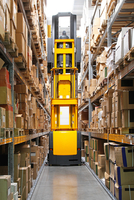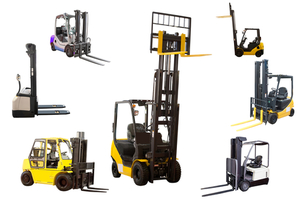Metrics to consider
When selecting a forklift, there are several key factors that you should keep in mind when selecting a type and brand of forklift. Each manufacturer and model has unique strengths that may make one the best fit for your organization.
- Load capacity. This is the maximum weight a forklift can lift, carry and transport. The load should be centered on the forks or attachment. Evaluate what you normally move and how heavy it is to help determine the load capacity of your ideal forklift.
- Lift height capacity. This is the highest point at which the forklift can safely lift its load capacity. Higher may cause the forklift to tip or fall over and put the operator at risk. Typically, the higher up the forklift goes, the less it can lift.
- Engine type. There are two types: electric and internal combustion. Electric forklifts are powered by lead-acid batteries and need to be recharged periodically. Internal combustion forklifts run on tanks of propane or gas. They produce emissions that need to be accounted for if used inside a warehouse or other facility.
- Terrain and temperature considerations. There are forklifts designed for use in specific locations and conditions. If you know you are working outside, there are rough terrain models whereas models designed for indoor warehouse use may have different tires and suspension that make them unusable in those circumstances.
- Uses. Forklifts load cargo, move materials on job sites and place goods in storage but not one type of forklift is ideal to do all three things in every environment.
- Pricing. The cost of a forklift ranges from a few thousand dollars to tens of thousands, depending on its specific intended use.
- Training. It is imperative to provide proper training for your employees that operate your forklifts. You can get machine-specific training from the dealer or use resources like OSHA to develop and implement training materials and classes.



 You may find more than one model, manufacturer or brand meets your requirements. All things being equal, including your comfort level with the price, there are some other factors that you can assess to make your final determination.
You may find more than one model, manufacturer or brand meets your requirements. All things being equal, including your comfort level with the price, there are some other factors that you can assess to make your final determination.